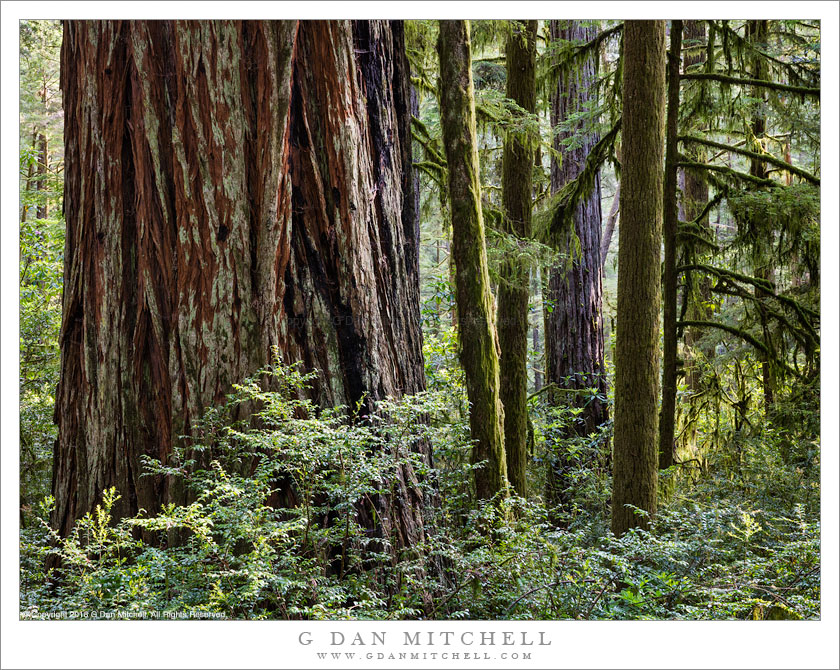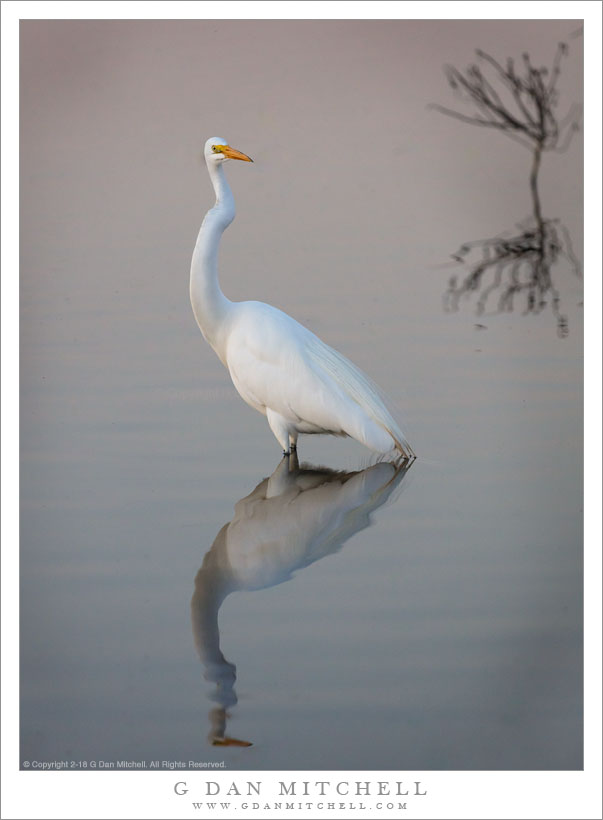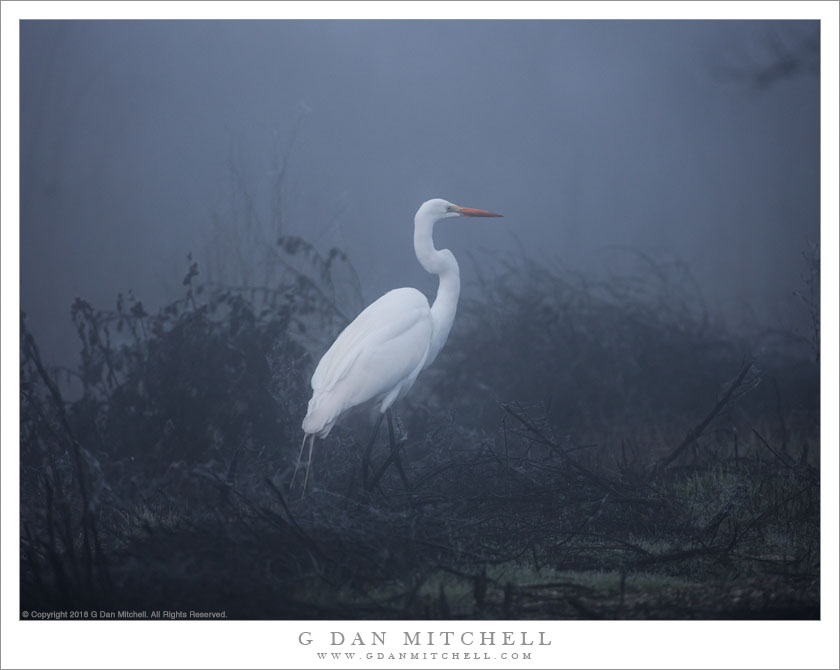
Egret Among Clouds. © Copyright 2018 G Dan Mitchell – all rights reserved.
An egret flies into early morning winter sky with fog and clouds
In some ways the great white egrets seem less special than some of the birds that arrive and depart in huge flocks each season. The first sight of these birds in impressive — whether it is a solitary bird flying past with its characteristic slow wing motion, a bird hunting in grassland or shallow water, or perhaps a small group in a winter field. But eventually you figure out that they are far from rare, and you can find them in many areas that have the right combination of water and food.
However, in flight they have a remarkable degree of gracefulness. They almost always fly alone, and they tend toward slow-moving, steady flying, often coasting or moving wings slowly. There landings are momentarily very beautiful as wings flare just as they hit the ground. This bird took to the air nearby and then flew slowly into a cloudy golden hour sky.
See top of this page for Articles, Sales and Licensing, my Sierra Nevada Fall Color book, Contact Information and more.
 G Dan Mitchell is a California photographer and visual opportunist. His book, “California’s Fall Color: A Photographer’s Guide to Autumn in the Sierra” is available from Heyday Books and Amazon.
G Dan Mitchell is a California photographer and visual opportunist. His book, “California’s Fall Color: A Photographer’s Guide to Autumn in the Sierra” is available from Heyday Books and Amazon.
Blog | About | Flickr | Twitter | Facebook | LinkedIn | Email
All media © Copyright G Dan Mitchell and others as indicated. Any use requires advance permission from G Dan Mitchell.



